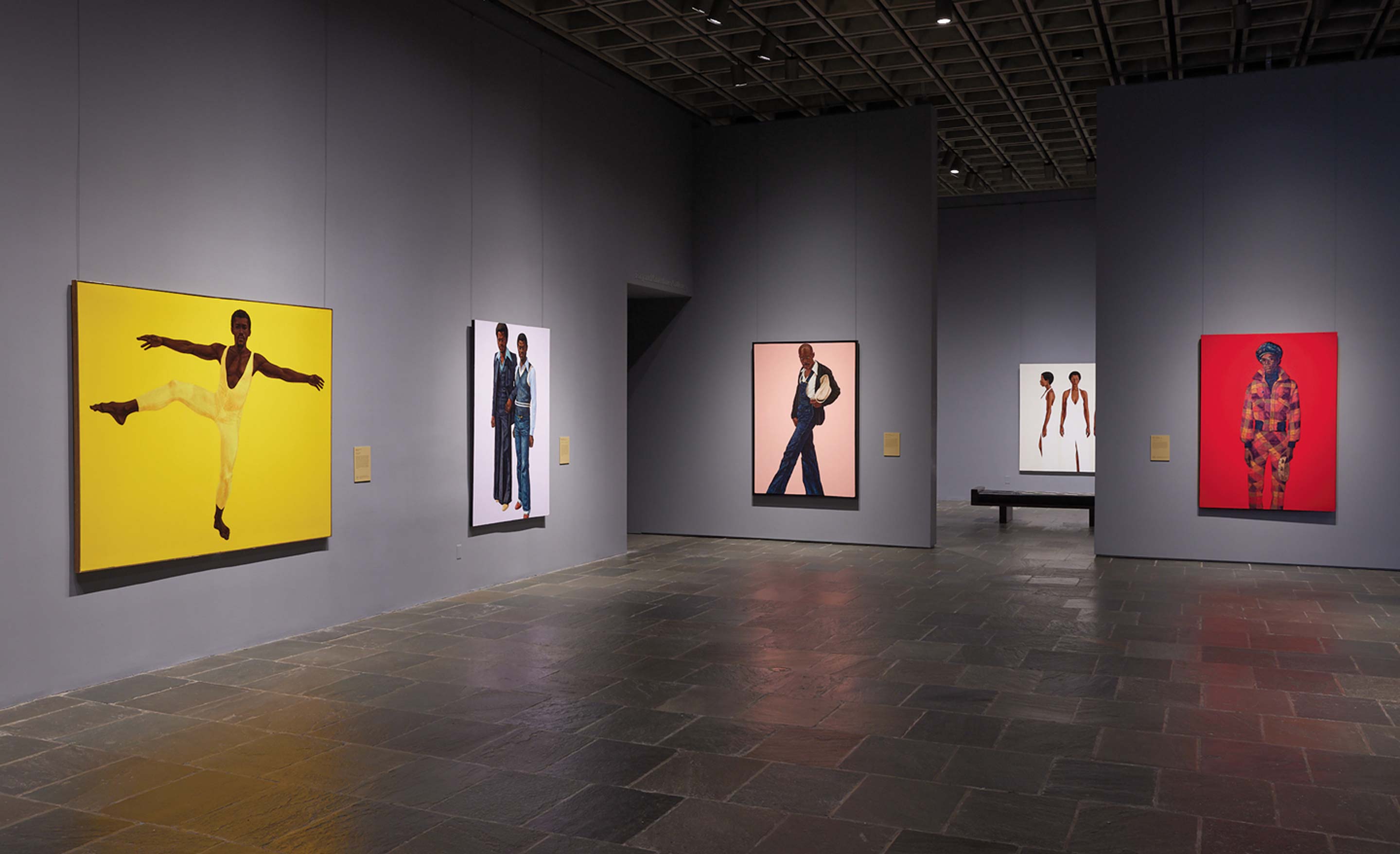Hendricks at the Frick
Six years after his death, Professor Emeritus Barkley L. Hendricks makes history as the first Black artist with a solo show at the storied museum
Above: Gallery view of Barkley L. Hendricks, Portraits at the Fricke, George Koelle
The late Barkley L. Hendricks considered New York’s The Frick Collection—with its iconic portraits by Rembrandt, Bronzino, Van Dyck and others—to be one of his favorite museums.
He would visit frequently, studying the works of the European greats. But he was also keenly aware of the whiteness of it all. In fact, the Frick never displayed a portrait of a Black person in Hendricks’ lifetime.
So it’s not hard to imagine that he’d have been delighted to know that when Black portraits did finally hang alongside the Frick’s most celebrated works, they were his own.
In September, Barkley L. Hendricks: Portraits at the Frick opened in the museum’s temporary space, Frick Madison. Featuring 14 of Hendricks’ large-scale paintings, which revolutionized contemporary portraiture with their vivid depictions of everyday Black Americans, it was the first solo show dedicated to an artist of color in the Frick’s 88-year history.
“Hendricks’ astonishing portraits of predominantly Black figures, not represented in the Frick’s historic paintings yet who, with their self-assured style, appear right at home among them, grant unprecedented opportunities to celebrate and explore the Frick’s collection, Hendricks’ groundbreaking innovations, and the bridges between them,” said Frick curator Aimee Ng, who organized the show along with consulting curator Antwaun Sargent.
Along with the exhibition, Hendricks’ art and its impact were further explored through a richly illustrated exhibition catalog with contributions by artists and creative figures including Derrick Adams, Hilton Als, Nick Cave, Awol Erizku, Rashid Johnson, Fahamu Pecou, Mickalene Thomas and Kehinde Wiley. The Frick also offered a robust roster of educational public programs to complement the show, which considers the complex place of European painting in Hendricks’ art and how his work, in turn, continues to inspire major artists and designers today.
Indeed, Wiley, painter of the famous Barack Obama portrait, begins her catalog essay with a simple declaration: “No figurative artist can approach painting without considering Barkley Hendricks.”
Most of Hendricks’ portraits feature people he knew, including friends, family members and his Connecticut College students and colleagues. One of the paintings in the Frick exhibition, Blood (Donald Formey), depicts Hendricks’ former student Donald Formey ’76. Against a rich red background, Formey stands clad in a plaid bomber-style jacket and matching pants. His arms are by his sides, but in his left hand he holds a tambourine, which Formey recalls Hendricks gave him after he noticed Formey tapping his foot to the music playing in the studio while he sat for the portrait in 1975.
Ng told the Associated Press that Formey visited the museum to see the painting when the exhibition opened. In choosing to paint him, Hendricks made Formey “feel no longer invisible,” Ng said. “It was so powerful for him.”
For most of Hendricks’ prolific career, his artwork went largely unheralded. As a professor of studio art at Conn, he worked with generations of students to develop and refine their artistic voices in representational painting, drawing, illustration and photography. He joined the faculty in 1972 and retired in 2010. All that time he was painting.
Around the time of his death in 2017 at the age of 72, the art world was beginning to take notice. In 2016, Barkley L. Hendricks debuted at the Jack Shainman Gallery in Manhattan. Featuring many of his later and more political pieces, it was Hendricks’ second solo show at the gallery. In 2018, the Nasher Museum of Art at Duke University presented Hendricks’ first major career retrospective, Barkley L. Hendricks: Birth of the Cool, which also traveled to the Studio Museum in Harlem, the Santa Monica Museum of Art in California, the Pennsylvania Academy of the Fine Arts in Philadelphia and the Contemporary Arts Museum Houston.
Private collectors have also started paying attention. In December of 2020, Mr. Johnson (Sammy From Miami), a 1972 portrait, sold at Sotheby’s for $4,013,000. This past November, Yocks, a 1975 double portrait, sold at auction for an impressive $8.4 million, well over the projected $4-6 million.
It’s about time Hendricks receives the recognition he deserves, art critic Yinka Elujoba wrote in his New York Times review of Portraits at the Frick.
“Hendricks seems to have maintained the position of an underground virtuoso who is always being discovered in bits and pieces. The show at the Frick seems to be, finally, a break into the atmosphere, introducing him to a new audience and solidifying his position in the canon and lineage of Black American portraiture.”
